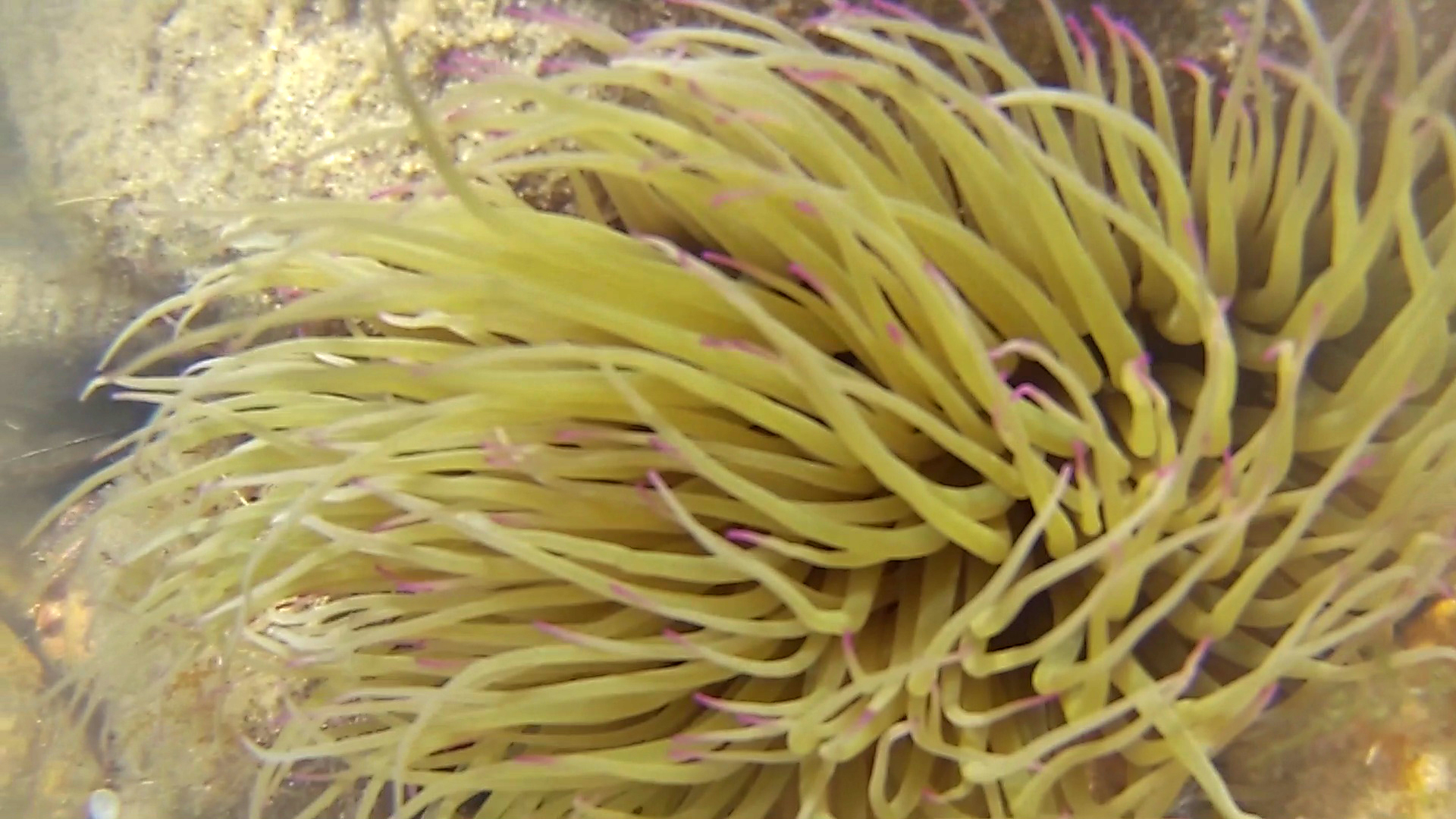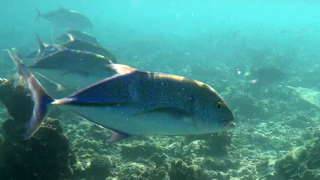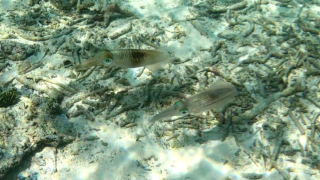Symbiosis between fish and jellyfish
Cassiopea Trachurus trachurus Simbiosi Symbiosis intotheblue.it

In the video you can see how fish and jellyfish can live in symbiosis. It is a common behavior of some species of fish in the Mediterranean Sea to find shelter, and above all food among the tentacles of some jellyfish. The advantage is obviously reciprocal, while the fish finds a safe refuge from predators, the jellyfish finds a traveling companion that frees it from parasites and unwanted guests. This behavior is widespread in all the seas of the world and varies from species to species, anemone and clown fish, shrimp and moray eel, hermit crab and gorgonian (which we have filmed), cleaner fish and jack fish, there are many examples.

Here we met the Mediterranean Cassiopea (Cotylorhiza tuberculata) and probably the Trachurus trachurus (the common Atlantic horse mackerel). Mediterranean Cassiopeia, Mediterranean jelly or fried egg jellyfish, is the most common jellifish of the Mediterranean Sea, it is totally harmless, and out of three jellyfish we met while snorkeling, two had a fish that swam quietly sheltered by the tentacles of the jellyfish. Cassiopea Trachurus trachurus Simbiosi Symbiosis intotheblue.it

Wikipedia tells us:
Mediterranean Cassiopeia (Cotylorhiza tuberculata (Macri, 1778)) is a scifomedusa of the Cepheidae family, common in the Mediterranean Sea. This species, which reaches 30 cm in diameter, has a characteristic umbrella in the shape of a white disc, with a round and yellow hump in the middle (it looks like an egg on the bull’s eye). The margin is typically jagged, yellow or sometimes greenish due to the presence of zooxanthellae. The species, like all those belonging to the class of Rhizostomeae, is devoid of tentacles, but rich in oral arms that depart from the four lobes of the mouth, of which many are thin and end with a small blue / purple button.

It is a pelagic species, endemic to the Mediterranean sea, very common, particularly in the Adriatic from October to May. Despite its large size, this species is not stinging. Only the most sensitive subjects may incur small pinches in contact with the arms. Typical is the presence, in the vicinity of the same, of small fry of the species Trachurus trachurus, Seriola dumerili, Caranx ronchus, Sarpa salpa and Boops boops. https://it.wikipedia.org/wiki/Cotylorhiza_tuberculata

The horse mackerel (Trachurus trachurus) or suro or “spicaluru” is a seawater fish from the family of Carangidae. It lives in deep areas between 200 and 1000 m, but it can rarely be found at low depth, especially in sheltered and shady areas. It is found in the north-eastern Atlantic Ocean, from Iceland to Senegal, including the islands of Cape Verde, as well as in the Mediterranean Sea and rarely in the Black Sea. There are two main populations: the western one that lives off western Europe, and the northern population living in the North Sea. It has an accessory lateral line extended along almost the entire back, which is green with lively iridescence. the lateral line is equipped with very wide scutellos. The sides are silver and have a black spot on the postero-superior part of the operculum and another on the pectoral axilla.
The dorsal fins are gray, the anal fins and whitish ventral fins, the pectoral fins and the ventral grayish-green. It is normally about 30 cm long, but some specimens reach 40 cm. It gathers in large schools in coastal waters, where it feeds on crustaceans, cephalopods and other fish.
The young gather in packs under the umbrella of large jellyfish (especially of the Rhizostoma pulmo and Cothylorhiza tuberculata species) finding shelter and protection without any danger as they are immune to the venom of its nematocysts. Also other young trevally, for example the amberjack, have the same behavior.
https://it.wikipedia.org/wiki/Trachurus_trachurus






















You must be logged in to post a comment.